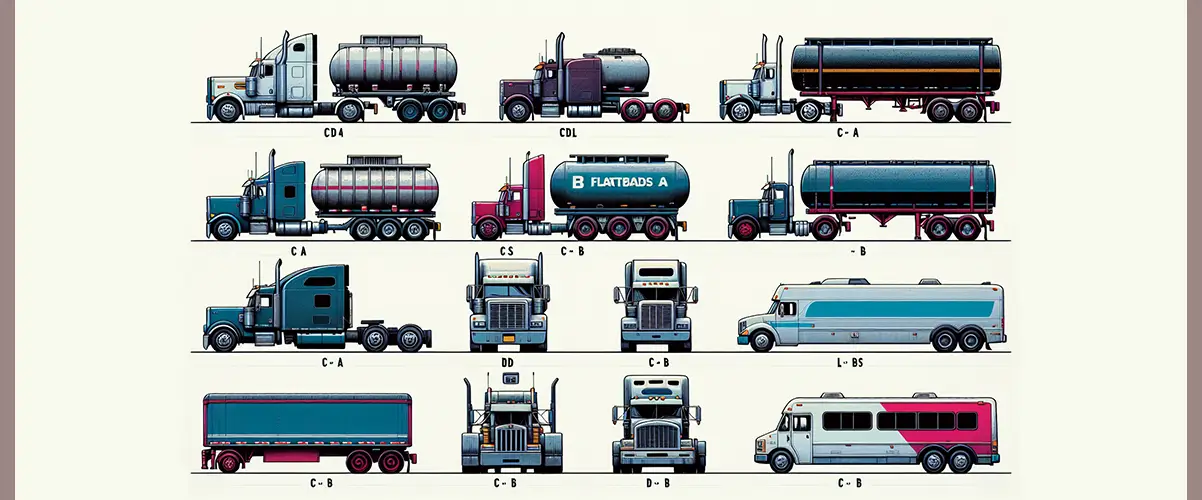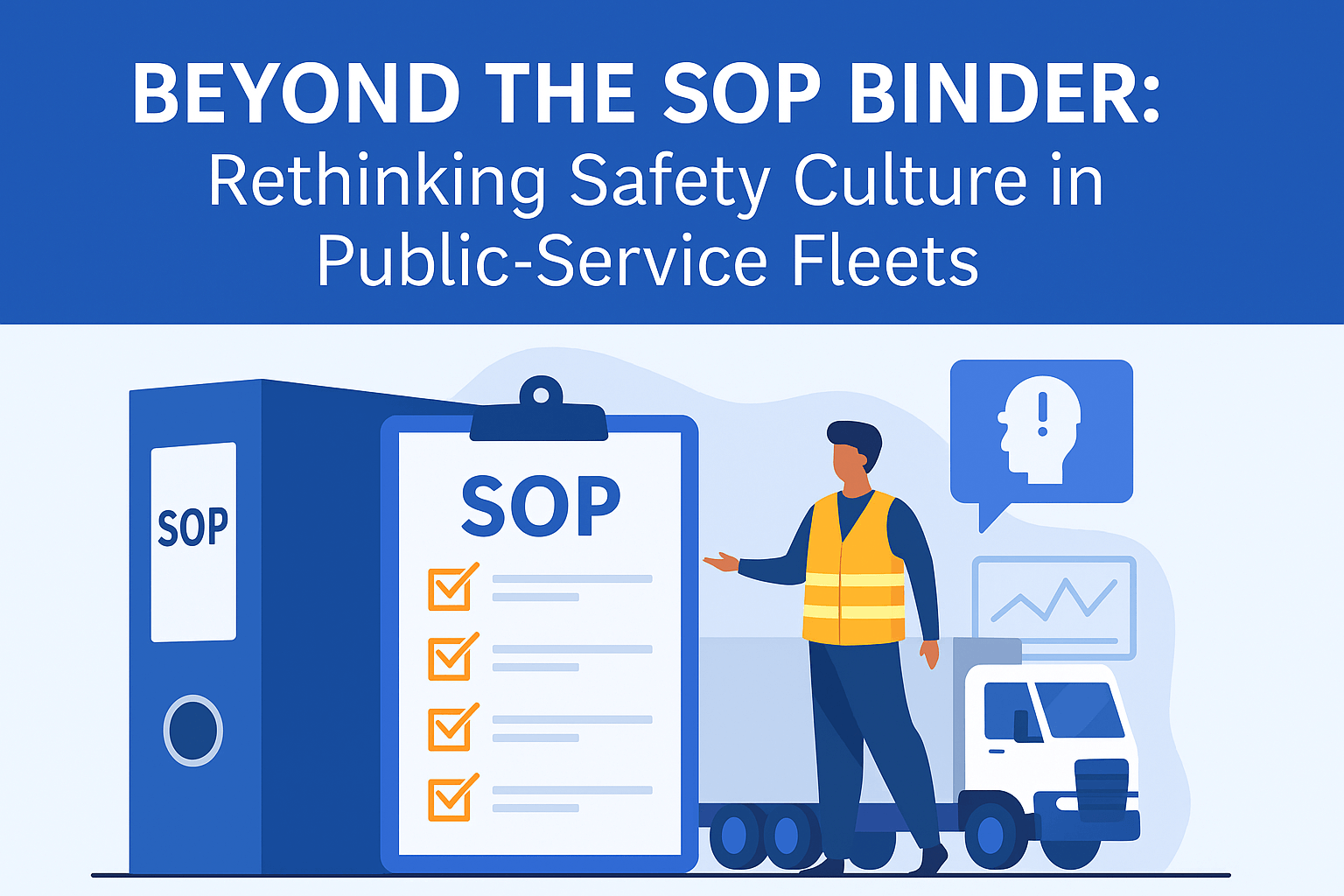
Deciding between a CDL A and CDL B license can shape your commercial driving career. In this article, we will discuss “cdl a vs cdl b” and explain the key differences to help you pick the right license for your career goals. A CDL A lets you drive large vehicles like tractor-trailers, while a CDL B is for smaller trucks and buses.
Table Of Contents
Key Takeaways
- Class A CDL licenses permit operation of a wider range of commercial vehicles, including those over 26,001 pounds with towing capacities above 10,000 pounds, offering broader job opportunities and higher earning potential.
- Class B CDL licenses are more restrictive, allowing individuals to operate single vehicles over 26,001 pounds with limited towing capacity, ideal for local or shorter route jobs such as driving buses, box trucks, or dump trucks.
- Choosing between a Class A and Class B CDL depends on career goals, job market demand, and the nature of the training programs available, with significant differences in job opportunities, income, and lifestyle implications.
Understanding CDL A and CDL B
Class A and Class B are the two most common types of commercial drivers license. Each type has specific requirements and allows drivers to operate different types of vehicles. Both of these licenses enable you to operate large, commercial vehicles, but they differ in several significant ways. For instance, a Class A CDL allows for the operation of multiple types of commercial trucks and tractor trailers, while a Class B CDL is more restrictive, limiting you to vehicles such as straight trucks and dump trucks.
Individuals venturing into the commercial truck driving industry must comprehend the distinction between these two licenses. Additionally, businesses relying on freight transportation also need to be aware of the distinctions. As a prospective professional truck driver, your career path can be significantly influenced by whether you opt for a Class A or Class B CDL.
What is a Class A CDL?

A Class A CDL is required to drive a combination of vehicles with a gross vehicle weight exceeding 26,001 pounds and a towing capacity over 10,000 pounds. This means that holders of a Class A CDL can drive a wide range of large commercial vehicles, including:
- tractor-trailers
- tanker trucks
- flatbed trucks
- livestock carriers
- dump trucks
- refrigerated trucks
- car carriers
These vehicles include but are not limited to class b vehicles, class c vehicles, and combination vehicles:
- Semi-trucks
- Tractor-trailers
- 18-wheelers
- Tankers
- Flatbeds
- Livestock carriers
- Most vehicles that can be operated with a Class B or C CDL
As such, a Class A CDL opens up a wide range of job opportunities, offering more flexibility in terms of the types of vehicles you can drive.
What is a Class B CDL?

Driving a single vehicle that weighs more than 26,001 pounds and can tow up to 10,000 pounds requires a Class B CDL. This type of license is different from those required for smaller vehicles. This essentially means that Class B CDL holders are more limited in the types of vehicles they are permitted to operate. Some examples of vehicles that require a Class B CDL include:
- Large buses
- Box trucks
- Dump trucks
- Cement mixers
- Tow trucks
If you are interested in driving these types of vehicles, you will need to obtain a Class B CDL, also known as a class b license or a CDL B license.
These typically include straight trucks, buses, garbage trucks, dump trucks, delivery trucks, and cement mixers. Class B CDL holders often find themselves driving straight trucks, box trucks, and delivery vehicles. As such, a Class B CDL might be a better fit for you if you’re interested in driving lighter commercial vehicles such as straight trucks or buses.
Key Differences Between CDL A and CDL B
The differences between Class A and Class B CDLs include:
- Type and weight of vehicles each license allows you to operate
- Training and testing requirements
- Job opportunities
- Earning potential
- Endorsements
- Restrictions
For example, a Class A CDL allows operation of a variety of vehicles like tractor-trailers, tankers, and flatbeds, whereas a Class B CDL restricts you to driving a single vehicle weighing 26,001 pounds without an attached trailer. Therefore, these factors are worth considering when deciding between a Class A and a Class B CDL.
Vehicle Types and Weight Limits

One of the key differences between a Class A and Class B CDL lies in the types of vehicles you can operate and their weight limits. With a Class A CDL, you can operate vehicles or combinations of vehicles with a Gross Vehicle Weight Rating (GVWR) of 26,001 pounds or more. Moreover, you can tow vehicles weighing 10,000 pounds or more.
On the other hand, while Class B CDL holders can also drive vehicles with a GVWR of 26,001 pounds or more, they are restricted to vehicle towing weighing less than 10,000 pounds. This difference in towing capacity can significantly affect the types of jobs you can take on and the types of vehicles you can drive.
Job Opportunities and Career Paths
Choosing between a Class A and Class B CDL can also impact your career path and the types of jobs you can apply for. For instance, a Class A CDL opens up more diverse job opportunities and allows you to work for a broader range of trucking companies. This is particularly true if you’re interested in long-haul or interstate driving careers, as a Class A CDL is required for driving commercial trucks across state lines.
However, this doesn’t mean that a Class B CDL doesn’t have its advantages. While it’s true that there may be fewer employers looking for Class B drivers, leading to higher competition, a Class B CDL can be sufficient if you’re interested in driving school buses or local delivery trucks.
Overall, while Class A CDL drivers have access to more diverse job opportunities and higher pay, Class B CDL drivers may have fewer options for specialized driving jobs but can still earn a good living. For instance, the average annual salary for drivers with a Class A CDL is $103,742, while that for a driver with a Class B CDL is $67,671.
Training Requirements
The training and testing requirements for obtaining a Class A or Class B CDL can also be a determining factor in your decision. Both classes of CDL licenses require completion of a CDL training program. However, training for a Class A CDL is more intensive, requiring better skills to maneuver larger trucks. This can influence the financial cost of obtaining your license, which can range between $3,000 to $10,000 depending on the training program, and the time commitment, with a typical Class A CDL course being 180 hours long.
On the other hand, obtaining a Class B CDL involves a mix of classroom learning and driving practice which is generally less demanding than Class A CDL training.
Endorsements and Restrictions
An important aspect to consider when choosing between a Class A and Class B CDL are the endorsements and restrictions associated with each license. Both Class A and Class B CDL holders are eligible for endorsements such as:
- HAZMAT
- tanker
- passenger
- school bus transport
- a combination of tanker and hazardous materials
However, there are certain endorsements and restrictions unique to each class of CDL. For instance:
- Class A CDL holders can obtain additional endorsements for double/triples, which allow them to operate double or triple trailers.
- An N endorsement permits Class B CDL holders to operate tanker vehicles carrying liquids and gases.
- An S endorsement is necessary for school bus drivers, requiring a written test, road test, and background check.
Common Endorsements for CDL A
Depending on the type of haul, Class A CDL training often includes special endorsements. Some common endorsements for Class A CDL holders include HAZMAT, tanker, and double/triple trailers. These endorsements allow Class A CDL holders to operate a wider range of vehicles and carry more diverse types of cargo.
For instance, a HAZMAT endorsement allows for the operation of a vehicle carrying hazardous materials within a tank. Meanwhile, a T endorsement allows for the operation of double or triple trailers, significantly expanding the types of vehicles a Class A CDL holder can operate.
Common Endorsements for CDL B
Just like Class A CDL holders, Class B CDL holders can also obtain endorsements to further specialize and qualify themselves for certain types of driving jobs. For instance, one common endorsement for Class B CDL holders is the Passenger Endorsement (P endorsement), which permits the operation of vehicles designed to carry passengers, such as buses.
Another important endorsement for Class B CDL holders is the School Bus Endorsement (S endorsement), which allows for the operation of school buses. This endorsement requires a written test, road test, and background check, ensuring that only qualified individuals are entrusted with the important task of operating school buses.
Advantages and Disadvantages
Grasping the pros and cons of each CDL class can profoundly impact your decision. For instance, while Class A CDLs typically offer higher earning potential and broader job options, they also require more extensive training and stricter testing requirements. On the other hand, a Class B CDL allows for quicker entry into the workforce due to easier training requirements, but generally offers lower pay compared to a Class A CDL and there are fewer job opportunities available.
These pros and cons cover aspects like:
- The variety of vehicles you can handle
- Job opportunities
- Training and testing prerequisites
- Lifestyle implications derived from choosing one CDL class over the other.
Advantages of a Class A CDL
There are several advantages to opting for a Class A CDL. For starters, Class A CDL drivers have a higher earning potential, with salaries significantly higher than those of Class B CDL drivers, averaging around $103,742 annually in the U.S. Furthermore, truck driving with a Class A CDL offers excellent pay, benefits, and retirement options.
Moreover, a Class A CDL opens up broader job opportunities and enables you to operate a wider range of commercial vehicles, including those requiring specialized endorsements. Class A CDL driving positions also provide a level of employment independence, with drivers having more control over their schedules. Plus, obtaining a Class A CDL does not require a college degree, allowing individuals to avoid student debt.
Disadvantages of a Class A CDL
While there are plenty of advantages to holding a Class A CDL, there are also some notable disadvantages. For instance, drivers with a Class A CDL often spend extended periods away from home, which can strain personal relationships. Loneliness can also be a significant issue for Class A CDL drivers, especially for those who drive long-haul routes alone.
The job of a Class A CDL driver can also be stressful, involving factors like traffic, difficult consignees, and adverse weather conditions. Furthermore, maintaining a healthy diet while on the road can be challenging due to limited food options at truck stops. Irregular schedules may disrupt circadian rhythms, leading to insomnia. Lastly, obtaining a Class A CDL involves more extensive training and stricter testing requirements compared to a Class B CDL.
Advantages of a Class B CDL
A Class B CDL, on the other hand, comes with its own set of advantages. Obtaining a Class B CDL is easier and quicker compared to other types of CDLs, allowing for quicker entry into the workforce. In addition, a Class B CDL opens up more job opportunities, specifically for roles involving delivering goods and moving people.
Although the pay may not be as high as that of Class A CDL drivers, it still provides a decent income. And for individuals more comfortable driving smaller vehicles or those interested in local or short-haul jobs, a Class B CDL can be the perfect fit.
Disadvantages of a Class B CDL
However, a Class B CDL also comes with its share of disadvantages. For starters, Class B CDL drivers earn an average annual salary of $67,671 in the U.S., which is generally lower compared to Class A CDL drivers. Furthermore, Class B CDL holders have fewer job opportunities compared to Class A CDL drivers.
These disadvantages are not necessarily drawbacks but rather factors to consider when deciding between a Class A and Class B CDL. Weighing these pros and cons in light of your career goals and lifestyle preferences is crucial for making an optimal decision for your trucking industry career.
Making the Right Choice for Your Career
Choosing the right path for your career entails more than merely comprehending the differences between Class A and Class B CDL. It also requires you to assess your career goals, consider the job market demand, and evaluate the training programs available to you.
In the end, your personal circumstances and career aspirations should guide your decision. Considering the potential benefits and drawbacks of the CDL is crucial in making a well-informed decision about its suitability for success and opportunities. It is essential to weigh these factors carefully before making a choice.
Assessing Your Career Goals
Evaluating your career goals is a pivotal step when choosing between a Class A and Class B CDL. Do you see yourself:
- driving across states in a tractor-trailer
- driving a school bus or a local delivery truck
- specializing in transporting hazardous materials or passengers
Your decision will be significantly shaped by your career goals. For example, if you’re interested in long-haul driving or wish to operate a wide range of commercial vehicles, a Class A CDL might be the best choice. On the other hand, if you prefer local routes or driving smaller commercial vehicles, a Class B CDL could be the way to go.
Considering Job Market Demand
Job market demand is another key aspect to consider. It’s important to remember that the demand for CDL drivers can vary significantly between local, regional, and OTR routes, influencing job availability and stability.
For instance, a Class A CDL provides job security due to the high demand for truck drivers. However, there are also opportunities for Class B CDL holders, especially for roles involving local delivery or bus driving. Understanding the job market demand and how it affects job availability and stability is crucial when deciding which CDL to pursue.
Evaluating Training Programs
Lastly, assessing the available training programs plays an essential role in your decision-making process. Quality CDL training programs can significantly impact your readiness and success in the trucking industry. Some programs even offer additional benefits like covering lodging costs for trainees and including paid OTR training as part of the program. Therefore, it’s imperative to thoroughly research and evaluate training programs before making a decision.
Summary
In conclusion, choosing between a Class A and Class B CDL is a significant decision that can shape the trajectory of your trucking career. It requires a thorough understanding of each license, including their differences, advantages, and disadvantages. By assessing your career goals, considering job market demand, and evaluating training programs, you can make an informed choice that aligns with your career aspirations and lifestyle preferences. Remember, your choice of CDL should be a stepping stone to a successful and fulfilling career in the trucking industry.
Frequently Asked Questions
What are the main differences between a CDL A and CDL B?
The main difference between a CDL A and CDL B is that a CDL A allows you to operate a wider range of vehicles, including combination vehicles, while a CDL B only permits driving a single vehicle within a certain weight limit.
What vehicles can you drive with a Class A CDL?
With a Class A CDL, you can drive a tractor-trailer, tractor trailer buses, tankers, flatbeds, and most vehicles that can be operated with a Class B or C CDL.
What vehicles can you drive with a Class B CDL?
With a Class B CDL, you can drive straight trucks, buses, segmented buses, box trucks, dump trucks, and some Class C vehicles with appropriate endorsements. This provides a wide range of options for operating commercial vehicles.
What are the advantages of choosing a Class A CDL?
Choosing a Class A CDL offers higher earning potential, increased job opportunities, and the ability to operate a wider range of commercial vehicles. It also opens up opportunities for long-distance driving and over-the-road (OTR) trucking.
What factors should I consider when choosing between a Class A and Class B CDL?
When choosing between a Class A and Class B CDL, consider your career goals, job market demand, training and testing requirements, and lifestyle implications. It’s essential to weigh these factors to make an informed decision.







